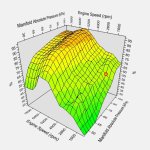DanGT86 said:I haven't given up on the belief that a finely tuned controller with enough amps could obsolete a clutch but I am pretty convinced that a clutch is a way easier solution and way more familiar to most riders at this point. Id rather have one and not use it than realize at the end of a build that I want one.
Right on the money I reckon, except that you still might not have dealt with the ability to totally chop drive instantly. For that I think you have to come back to a clutch.
Stopping the rotating masses is not the same as disconnecting them, and even without a discrete flywheel there is still a significant flywheel effect in the motor itself.
There's often times the last thing you want to is to stop the back wheel and so eg. slam the front down off a 2m high step! It's a world of difference between cutting forward drive and actually stopping it.
There's also the consideration of the effect of the reaction torques if you actively rapidly slowed or stopped the motor.
I thought I'd throw this video in here. This is almost a defining maneuver I reckon.
This was filmed at 120 fps I think.
It clearly shows:
- the rise in rpm, storing power and setting the available power.
- The clutch release (4 frames to full release, so 1/30th second)
- His boots are almost off the pegs from his jump
- You can see the tension in his arms as he tries to lift the bike
- Clutch is pulled in 60 frames later (0.5 second), when the rear wheel is fully locked to stop on top of the log.
- Another 0.5 second and clutch back out again to pop off the log (out of this clip).
I think this gives a decent picture of the instant torque that's needed and also the instant cut that is just as critical (if not more so - it's a significant safety valve). Plus how impossible it would be to do all this on just throttle.
https://vimeo.com/manage/videos/657655534


